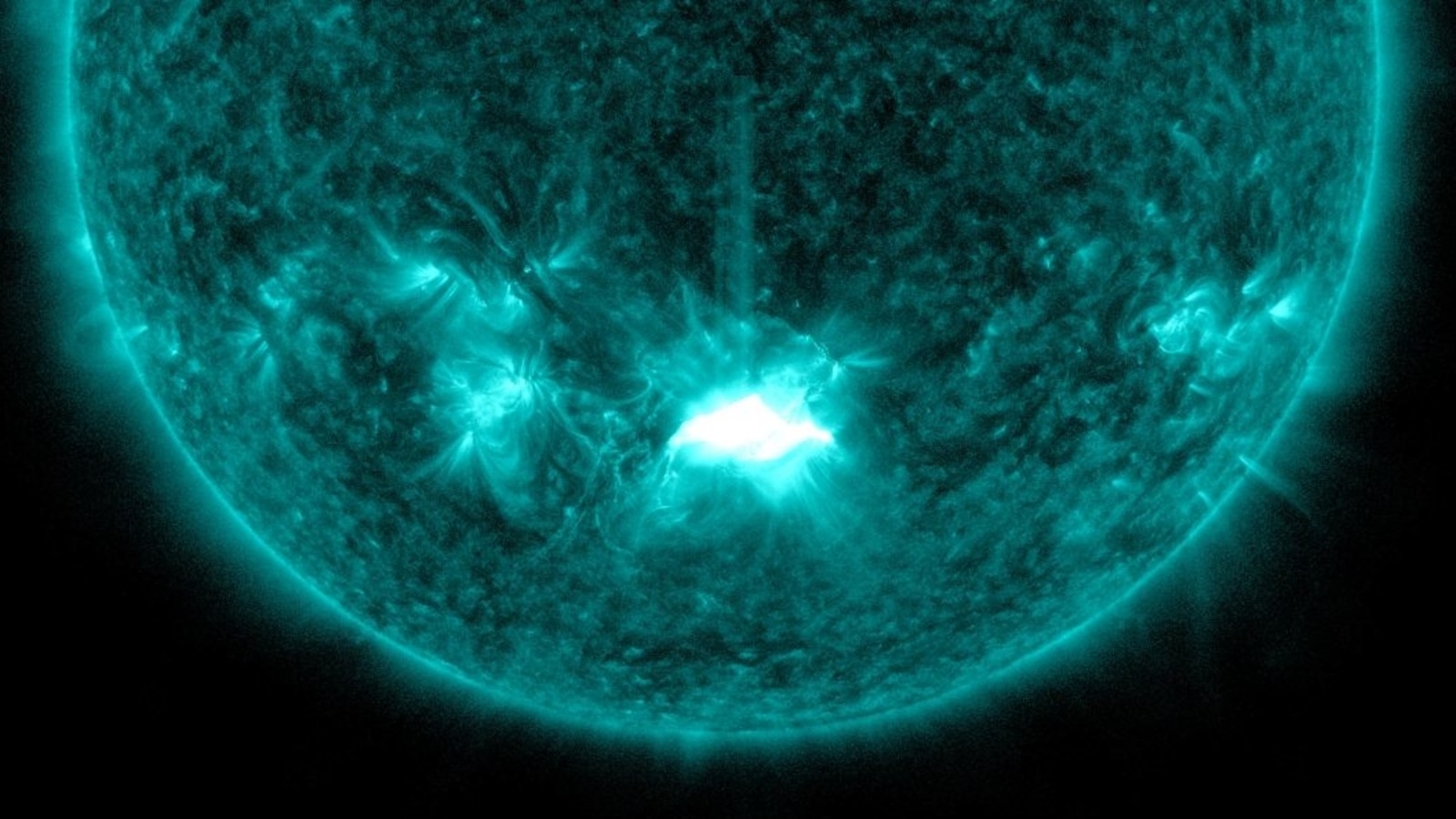Did a solar flare really hit Earth? Yes, it did, says NASA
- NASA confirmed that a solar flare hit the earth on October 28 and it was classified as an X1-class flare, which means it was quite intensive and packed a lot of power.

One of the more significant events in space that one can see with the naked eye, just took place and not many noticed. A solar flare hit a glancing blow to the Earth and flew by, leaving behind the sparkling Northern Lights or auroras. The space agency National Aeronautics and Space Administration (NASA) has confirmed the solar flare was ejected by the Sun and that it hit the Earth. Between October 25 and 28, NASA's Solar Dynamics Observatory, which constantly monitors the Sun, recorded a few days of activity that ended with a significant solar flare.
According to the space agency, on October 28, the Sun emitted a significant solar flare, which peaked at 11:35 a.m. EDT (8:30 p.m. IST). NASA classifies the peaked solar flare as an X1-class flare. The X-class flare means it is the most intense solar flare, while the number indicates its intensity - the power roses with the number.
In simple terms, flares are the bursts of radiation. A solar flare's harmful radiation cannot penetrate through Earth's atmosphere to harm humans on the ground, but it can affect the layer of the atmosphere where GPS and communications signals flow, if it is strong enough. However, its impact can create geomagnetic storms which disturb the GPS, radio communications and can even interfere with satellites.
The solar flare that hit the Earth's magnetic field around 10:00 UT (15:30 IST) on October 31 had a far smaller impact than expected, as it just caused a G1-class geomagnetic storm. Though, the solar flare caused auroras in the sky in some locations of the world, there was no damage reported.
According to the Spaceweather.com report, the reason for the weak impact of the solar flare is that the majority of the CME (coronal mass ejection) missed Earth.
Active October Sun Releases X-Class Flare: Watch YouTube video below
Check Nasa tweets below:
When a solar storm heads their way, lunar explorers will need more than howls at the Moon. 😱 🌙 #Artemis astronauts will rely on LunaNet to keep them updated of incoming space weather.
— NASA Sun & Space (@NASASun) October 30, 2021
More: https://t.co/D8hvQqWRxK
Brighter than a shimmering ghost, faster than the flick of a black cat's tail, the Sun cast a spell in our direction just in time for Halloween!☀️💥 🎃
— NASA Sun & Space (@NASASun) October 29, 2021
This week, the Sun produced a flurry of explosions, ending with an X1-class flare.
Highlights here: https://t.co/0dHtU1gOEP pic.twitter.com/dmh6y71cRA
If the Sun had ejected it when it would have directly hit the Earth, then there would have been a reason to worry. However, solar flares that can cause significant damage to Earth's infrastructure in terms of power grid failure, internet crash, satellite malfunction etc., may happen once in a century or so. Having said that, there was another massive solar flare that happened at the turn of the current century, but it too missed the Earth.
A new solar cycle comes roughly after 11 years. According to NASA, this was the second X-class flare of Solar Cycle 25, which began in December 2019. The Sun's nature changes from relatively calm to active, then quiet again, throughout the course of this cycle.
Catch all the Latest Tech News, Mobile News, Laptop News, Gaming news, Wearables News , How To News, also keep up with us on Whatsapp channel,Twitter, Facebook, Google News, and Instagram. For our latest videos, subscribe to our YouTube channel.





























